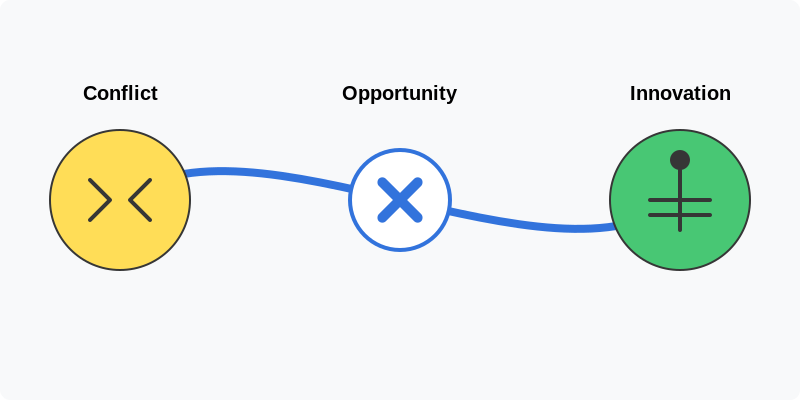Turning Conflict into Opportunity: The Innovation Connection
Conflict in the workplace often gets a bad rap, but I’ve found it can be one of the most powerful sources of innovation, if handled the right way.
And the research backs that up. Accenture found that companies encouraging constructive disagreement are six times more likely to be innovative. Gallup reports teams with healthy conflict management show 27% higher engagement. These numbers reflect what I see every day in my work with clients.
How Disagreement Fuels Creativity
Take a tech startup I worked with last year: their leadership team was split on product direction. One group wanted to push forward with new features, the other felt the core platform needed rebuilding. Instead of forcing a compromise, we explored the strengths of both perspectives and ended up creating a hybrid solution. They split the team, tackled both priorities, and the result was far stronger than either approach alone.
When teams learn how to challenge ideas without making it personal, that’s when real breakthroughs happen.
Creating Safety for Bold Ideas
In another case, a healthcare client was stuck. Despite several initiatives, patient satisfaction scores weren’t budging. The turning point came when we created space for frontline staff to share ideas openly without hierarchy or judgment. Within months, they implemented practical changes that boosted satisfaction scores by over 30%.
Three Ways to Turn Tension into Innovation
After years of navigating tough conversations across industries, here are three strategies I’ve seen work again and again:
- Reframe Criticism as Curiosity
Instead of shutting down feedback, turn it into a “What if we…” question. It’s a simple shift that keeps the conversation open and forward-thinking. - Try the Multiple Perspectives Exercise
When viewpoints clash, I have each side explain the other’s position and then the customer’s. It almost always reveals new common ground and better solutions. - Map the Value Behind the Tension
For leadership tensions, we visually map out what each person values. What often looks like conflict is actually two important priorities pulling in different directions – both valid, and both needed.
When teams can see how these differing perspectives fit together, they start recognising them as complementary strengths, not obstacles.
Your Next Breakthrough Could Be in the Tension
The successful teams don’t avoid conflict – they know how to work with it. I’ve seen time and time again that what feels like friction often contains the seeds of innovation.
If your team’s stuck or feeling the strain of competing priorities, it might be exactly the right time to reframe the conversation.
Curious how this might apply to your team? Reach out to set up a quick consult.




